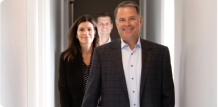/
Admin
The biggest news in recent days, in my opinion, has been the rise in oil prices and gasoline at the pump. Where I live, I've seen prices climb from roughly $1.94 per gallon to $2.40 per gallon in about ten days. I've long felt that a return in oil prices to $50-60 a barrell might signal a more stable economy and we're at the higher end of this range today. In response to these improvements, we have been inclined to increase our weighting to later stage cyclicals on the theory that improvements in emerging economies may help areas like energy, materials and multinational industrials the most.
There is a fine line, however, to how much gas prices can increase without causing a change in consumer behavior. Looking at my personal budget today compared to a year ago, I'm saving about $150-200 per month in gasoline costs. For those with longer commutes, the amount could be much more substantial, perhaps as much as a monthly car payment. For me, the savings amounts to a couple of dinners per month out with the family. If you take away this savings too quickly without an uptick in employment, the benefits of budget shift spending to some companies within the early cyclical consumer discretionary sector might be lost. (ie retail, restaurants etc.) Since these areas of the market have been very strong recently, taking some profits might not be a bad idea.
The market feels a little bit tired here and in this sense, I wouldn't be surprised if we had a pullback. I don't, however, believe a return to the old lows is likely. In hindsight, these lows were clearly set on fears of additional high profile bankruptcies and a more severe recession, perhaps even a depression. Many of the banks which had to raise additional capital following the stress tests did so very quickly late last week and yesterday, even some of the banks that didn't have that requirement did so anyway. An important thing to realize here is that the private capital markets are functioning much more effectively than they were a few months ago, when the only source of capital for many institutions was the government. In this sense, it is encouraging that some institutions may now be positioned to replace taxpayer funds with those raised in the private marketplace.

In summary, no change to our more bullish tone. Late cyclicals look interesting, early cyclicals may be a bit tired and defensives, while very cheap and thus interesting, may face near term headwinds as investors position more aggressively ahead of a recovery. My advice for investors? Have an idea of where we're headed, but never make sudden and complete shifts all at once.
There is a fine line, however, to how much gas prices can increase without causing a change in consumer behavior. Looking at my personal budget today compared to a year ago, I'm saving about $150-200 per month in gasoline costs. For those with longer commutes, the amount could be much more substantial, perhaps as much as a monthly car payment. For me, the savings amounts to a couple of dinners per month out with the family. If you take away this savings too quickly without an uptick in employment, the benefits of budget shift spending to some companies within the early cyclical consumer discretionary sector might be lost. (ie retail, restaurants etc.) Since these areas of the market have been very strong recently, taking some profits might not be a bad idea.
The market feels a little bit tired here and in this sense, I wouldn't be surprised if we had a pullback. I don't, however, believe a return to the old lows is likely. In hindsight, these lows were clearly set on fears of additional high profile bankruptcies and a more severe recession, perhaps even a depression. Many of the banks which had to raise additional capital following the stress tests did so very quickly late last week and yesterday, even some of the banks that didn't have that requirement did so anyway. An important thing to realize here is that the private capital markets are functioning much more effectively than they were a few months ago, when the only source of capital for many institutions was the government. In this sense, it is encouraging that some institutions may now be positioned to replace taxpayer funds with those raised in the private marketplace.

In summary, no change to our more bullish tone. Late cyclicals look interesting, early cyclicals may be a bit tired and defensives, while very cheap and thus interesting, may face near term headwinds as investors position more aggressively ahead of a recovery. My advice for investors? Have an idea of where we're headed, but never make sudden and complete shifts all at once.



